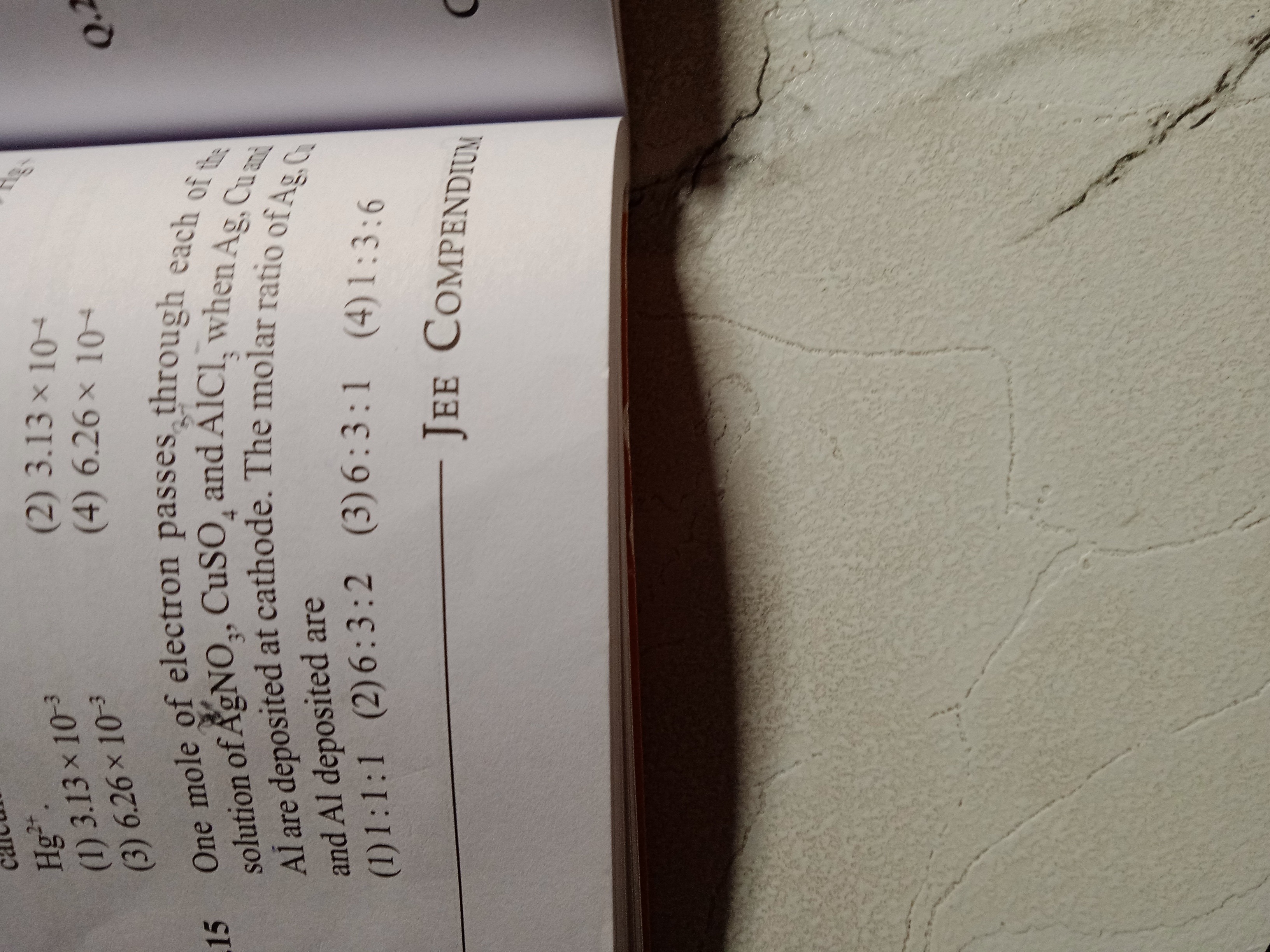Question
Question: One mole of electron passes through each of the solution of AgNO$_3$, CuSO$_4$, and AlCl$_3$ when Ag...
One mole of electron passes through each of the solution of AgNO3, CuSO4, and AlCl3 when Ag, Cu and Al are deposited at cathode. The molar ratio of Ag, Cu and Al deposited are

1:1:1
6:3:2
6:3:1
1:3:6
The molar ratio of Ag, Cu and Al deposited are 6:3:2.
Solution
The deposition of metals at the cathode occurs via reduction reactions, where metal ions gain electrons. The number of electrons required to deposit one mole of a metal depends on the charge of its ion.
-
For Silver (Ag): The ion is Ag+.
The reduction reaction is: Ag++e−→Ag(s)
This indicates that 1 mole of electrons deposits 1 mole of Ag.
Since 1 mole of electrons passes through the solution, moles of Ag deposited = 1 mole.
-
For Copper (Cu): The ion is Cu2+.
The reduction reaction is: Cu2++2e−→Cu(s)
This indicates that 2 moles of electrons deposit 1 mole of Cu.
Since 1 mole of electrons passes through the solution, moles of Cu deposited = 21 mole = 0.5 mole.
-
For Aluminum (Al): The ion is Al3+.
The reduction reaction is: Al3++3e−→Al(s)
This indicates that 3 moles of electrons deposit 1 mole of Al.
Since 1 mole of electrons passes through the solution, moles of Al deposited = 31 mole.
The molar ratio of Ag : Cu : Al deposited is therefore: 1:0.5:31
To express this ratio in whole numbers, we multiply each term by the least common multiple (LCM) of the denominators (1, 2, 3), which is 6. (1×6):(0.5×6):(31×6) 6:3:2
Thus, the molar ratio of Ag, Cu, and Al deposited is 6:3:2.
